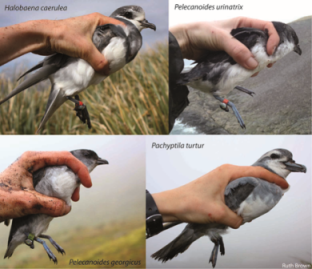According to niche theory, mechanisms exist that allow co-existence of organisms that would otherwise compete for the same prey and other resources. How seabirds cope with potential competition during the non-breeding period is poorly documented, particularly for small species. For the first time the potential role of spatial, environmental (habitat) and trophic (isotopic) segregation was investigated as niche-partitioning mechanisms during the non-breeding season for four species of highly abundant, zooplanktivorous seabird that breed sympatrically in the Southern Ocean. Spatial segregation was found to be the main partitioning mechanism; even for the two sibling species of diving petrel, which spent the non-breeding period in overlapping areas, there was evidence from distribution and stable isotope ratios for differences in habitat use and diving depth. informacion[at]ebd.csic.es: Navarro et al (2015) Spatial distribution and spatial niche of non-breeding planktivorous petrels. Scientific Reports 5: 12164. Doi doi:10.1038/srep12164
http://www.nature.com/srep/2015/150713/srep12164/full/srep12164.html








 Las altas temperaturas están provocando que las lagunas y las marismas de Doñana pierdan agua rápidamente
Las altas temperaturas están provocando que las lagunas y las marismas de Doñana pierdan agua rápidamente



